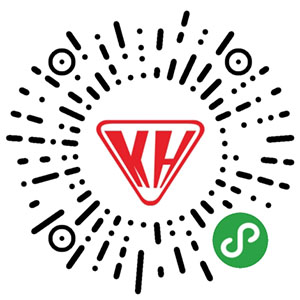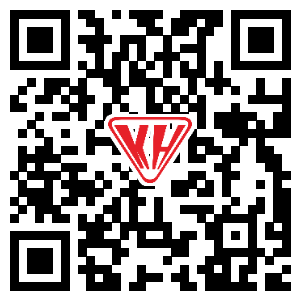Valves are the most common equipment in chemical enterprises. It seems easy to install valves, but if they are not executed in accordance with relevant technologies, safety accidents will occur...
No-no 1
Hydrostatic test was carried out under negative temperature in winter.
Consequence: the tube freezes quickly during the hydrostatic test, causing the tube to freeze.
Measures: water pressure test should be carried out as far as possible before winter application, and the water should be blown clean after pressure test, especially the water in the valve must be cleared in the clean, otherwise the valve will be light rust, heavy freeze crack.
During the hydrostatic test in winter, the project must be carried out at a positive indoor temperature and the water must be blown clean after the pressure test.
No-no 2
The pipeline system is not flushed carefully before completion, and the flow rate and speed cannot meet the requirements of pipeline flushing.
Water pressure strength test was even used instead of flushing.
Consequences: The water quality does not meet the operation requirements of the pipeline system, which often leads to the reduction or blockage of the pipeline cross section.
Measure: Flush with the maximum flow rate or flow rate not less than 3m/s.The water color and transparency of the discharge outlet should be consistent with the visual measurement of the water color and transparency of the inlet.
No-no 3
Sewage, rainwater and condensate pipes shall be concealed without water closing test.
Consequences: may cause water leakage, and cause user losses.
Measures: The closed water test should be checked and accepted strictly according to the standard.Underground installation, ceiling, pipe and other hidden sewage, rainwater, condensate pipe to ensure that no leakage.
No-no 4
In the water pressure strength test and tightness test of pipeline system, only observe the change of pressure value and water level, and the inspection of leakage is not enough.
Consequences: Leakage occurs after the operation of the pipeline system, which affects the normal use.
Measures: When the piping system is tested in accordance with the design requirements and construction specifications, the pressure value or water level changes shall be recorded within the specified time, and in particular, the leakage shall be carefully checked.
No-no 5
Butterfly valve flanges use ordinary valve flanges.
Consequence: butterfly valve flange and the general valve flange size is not the same, some flange diameter is small, and butterfly valve disc is large, resulting in not open or hard to open the valve damage.
Measures: according to the actual size of the butterfly valve flange flange processing flange.
No-no 6
In the construction of the building structure, there are no reserved holes and embedded parts, or the reserved holes are too small in size and the embedded parts are not marked.
Consequence: in the construction of warm sanitation project, picking out the building structure, or even cutting off the reinforced bar, affecting the safety performance of the building.
Measures: Be familiar with the construction drawings of heating and sanitation project, and actively and seriously cooperate with the construction of reserved holes and embedded parts according to the installation requirements of pipes, supports and hangers, and refer to the design requirements and construction specifications for details.
No-no 7
During pipeline welding, the wrong opening of the pipe after the opposite port is not in a center line, no clearance is left for the opposite port, no groove is removed for the thick-wall pipe, and the width and height of the welding seam do not meet the requirements of the construction code.
Consequence: the wrong orifice of the pipe is not in a center line, which directly affects the welding quality and perception quality.No clearance is left for the counterpart, no slotting is done for the thick-walled pipe, and the welding strength cannot be reached if the width and height of the welding seam do not meet the requirements.
Measures: After welding the pipe to the other side, the pipe should be on the center line instead of the other side.A gap should be left at the opposite mouth;Thick - walled pipes should be slotted.In addition, the width and height of the weld shall be welded in accordance with the requirements of the code.
No-no 8
Pipelines are directly buried in frozen soil and untreated loose soil, and the piers are not properly spaced and located, or even in the form of dry code bricks.
Consequence: The pipe was damaged in the process of compaction of backfill earth due to unstable support, which caused rework and repair.
Measures: The pipe shall not be buried in frozen soil and loose soil without treatment. The distance between piers shall meet the requirements of construction code, and the supporting pad shall be firm. In particular, the pipe connection shall not bear shear force.Brick piers to use cement mortar masonry, ensure integrity, firm.
No-no 9
The material of the expansion bolts for fixing the pipe bracket is inferior, the aperture of the installation expansion bolts is too large or the expansion bolts are installed on the brick wall or even the light wall.
Consequences: Loose pipe support, pipe deformation, and even fall off.
Measures: qualified products must be selected for expansion bolts. If necessary, samples should be taken for test inspection. The diameter of expansion bolts installed should not be 2mm larger than the outside diameter of expansion bolts.
No-no 10
Flanges and gaskets for pipe connections are not strong enough, and the connecting bolts are short or thin in diameter.Rubber pads are used for heat pipes, double or bevel pads for cold water pipes, and flange gaskets protruding into the pipes.
Consequence: flange connection is not tight, even damaged, leakage phenomenon.The penetration of the flange gasket into the tube will increase the flow resistance.
Measures: flanges and gaskets used in pipelines must meet the requirements of working pressure in pipeline design.
Rubber asbestos gaskets should be used for flange gaskets of heating and hot water supply pipes;Rubber gasket should be used for flange gasket of water supply and drainage pipeline.
The gasket of the flange shall not protrude into the tube, and the outer circle to the flange bolt hole shall be appropriate.Bevel pads or several gaskets shall not be placed in the middle of the flange. The diameter of the bolt connecting the flange should be less than 2mm than the diameter of the flange flange. The length of the bolt protruding nut should be 1/2 of the thickness of the nut.
No-no 11
Incorrect valve installation method.
For example, the water (steam) flow of globe valves or check valves is opposite to the sign, the stem is installed downward, horizontal check valves are installed vertically, the handle of rising stem gate valve or butterfly valve has no open and closed space, the stem of hidden valve is not oriented toward the inspection door.Consequences: valve failure, switch maintenance difficulties, valve stem down often cause water leakage.
Measures: Install in strict accordance with the valve installation instructions, keep the stem of the rising gate valve open height, fully consider the rotation space of the butterfly valve handle, all kinds of valve stem should not be lower than the horizontal position, let alone down.The hidden valve should not only set the inspection door to meet the needs of opening and closing the valve, but also the stem should face the inspection door.
No-no 12
The installation valve specifications and models do not meet the design requirements.
For example, the nominal valve pressure is less than the system test pressure;When the diameter of water supply branch pipe is less than or equal to 50mm, use gate valve;Cut-off valves are used in the dry and riser pipes for hot water heating.Butterfly valve is used for water suction pipe of fire pump.
Consequences: Affect the valve normal open and close and adjust resistance, pressure and other functions.Even caused damage to the valve during the operation of the system and forced repair.
Measures: Familiar with the application range of all kinds of valves, according to the design requirements to choose the valve specifications and models.Nominal valve pressure to meet the requirements of system test pressure.According to the requirements of the construction code: cut-off valve shall be used for the water supply branch pipe diameter less than or equal to 50mm;Gate valves should be used when pipe diameter is greater than 50mm.Hot water heating dry, vertical control valve should be used gate valve, fire water pump suction pipe should not be used butterfly valve.
No-no 13
The valve does not perform necessary quality inspection before installation.
Consequences: In the operation of the system, the valve switch is not flexible, the shutdown is not strict and the phenomenon of leakage (steam) occurs, causing rework and repair, and even affecting the normal water supply (steam).
Measure: Before installation, the valve should be tested for compressive strength and tightness.The quantity of each batch (same brand, same specification, same model) shall be randomly checked by 10% and not less than one.The strength and tightness test should be done one by one for the closed - circuit valve installed on the main pipe.The strength and tightness test pressure of the valve should comply with the "Construction Quality Acceptance Code for Building Water Supply, Drainage and Heating Engineering" (GB 50242-2002).
No-no 14
The main materials, equipment and products used in the construction are in lack of technical and quality appraisal documents or product certificates conforming to the current national or ministry standards.
Consequences: the project quality is not qualified, there are potential accidents, can not be delivered to use on schedule, must be reworked and repaired;Delay of construction, increase of manpower and material input.
Measures: The main materials, equipment and products used in water supply and drainage and heating and sanitation engineering shall meet the technical and quality identification documents or product qualification certificates issued by the state or the Ministry;The product name, model, specification, national quality standard code, date of manufacture, name and place of manufacturer, inspection certificate or code of the ex-factory product shall be indicated.
No-no 15
The valve inversion
Consequences: Check valve, throttle valve, pressure reducing valve, check valve and other valves have directionality, if installed in reverse, throttle valve will affect the service effect and life;Pressure relief valves do not work and check valves can be dangerous.
Measures: General valves, direction marks on the body;In case of no, the valve should be correctly identified according to the working principle.The valve chamber of the globe valve is asymmetrical, the fluid should be let from the bottom to the top through the valve mouth, so that the fluid resistance is small (determined by the shape), open to save effort (due to the medium pressure up), closed after the medium does not pressure packing, easy to repair.This is why the globe valve cannot be reversed.
Gate valves should not be inverted (i.e., handwheel down), as this can cause media to remain in the cover space for a long time, corrode the stem, and is No- No to certain process requirements.It is inconvenient to change packing at the same time.
Open stem gate valves should not be installed underground or the exposed stem may corrode due to moisture.
Lifting type check valve, when the installation to ensure that its disc vertical, in order to lift flexible.
Swing check valve, install to ensure its pin shaft level, so that the swing flexible.
Pressure relief valves should be installed upright in a horizontal pipe line, do not tilt in all directions.





 +86-021-55522202
+86-021-55522202


